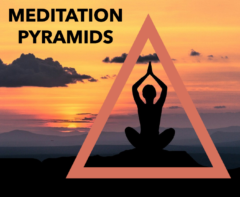When it comes to building a meditation playlist, it’s all about figuring out what you want to achieve. Think of your meditation goals as the guiding star. Whether you’re aiming to relax, focus, or ignite creativity, your music choices should vibe with that goal. Some tunes lift your spirits while others ground you. It’s all about finding what resonates with your journey.
Different types of music can serve various meditation purposes. Ambient music, with its ethereal nature, opens the door to inner exploration. Instrumental tracks, on the other hand, can create a serene backdrop that helps your mind wander less and center more. And don’t sleep on nature sounds like rain or ocean waves—they’re perfect for enveloping you in calmness.

The tempo and rhythm of the music are like the heartbeat of your playlist. Slower tempos generally encourage deeper relaxation, while subtly paced beats might help maintain your alertness during focus sessions. Also, pay attention to tonality; soothing tones and harmonious melodies often have a meditative magic to them.
Of course, you don’t have to start from scratch. Many music streaming services offer plugins and curated playlists specifically for meditation. They can be an excellent resource to jump on or just inspire your playlist. Browse around, sample tracks, and let your intuition lead the way.
Structuring Your Playlist for a Seamless Experience
Crafting your meditation playlist is not just about picking tracks you like. The order of your music can turn an ordinary meditation session into a transformative experience. It’s like piecing together a sonic journey for your mind.
Start by organizing your tracks to follow a natural progression. Begin with music that eases you into the session, tracks with gentle introductions often work well. Midway, you might want music that maintains a steady, comforting rhythm, keeping you engaged yet relaxed. As you near the end, opt for tracks that slowly diminish in intensity, allowing your mind to wind down smoothly.
Breathing spaces can be just as crucial as the music itself. Designing intervals of silence or soft breathing exercises between tracks provides moments for reflection and deeper internal connection. They act like pauses between stanzas in a poem, giving you time to process and prepare for what’s next.
Variety is the spice. Incorporate different types of sounds or genres so your sessions don’t feel repetitive. It might be tempting to stick with what you love, but mixing things up keeps your mind attentive and present.
Consider the length of your playlist too. Tailor it to fit the duration of your practice. If you’re meditating for 10 minutes or 30, align your playlist accordingly, avoiding abrupt halts or loop distractions.
Remember, the ultimate aim is a harmonious blend that aids your meditation rather than dictating it. Adjust as needed until the mix feels just right for you.
Enhancing the Atmosphere Around Your Playlist
Building a meditation playlist is only part of the picture. To really elevate your meditation sessions, think about the entire atmosphere that’s accompanying your music. It’s about setting a scene that complements the sound.
Guided meditations can be a great companion to the music. They provide structure and intention, especially helpful if you’re new to meditation or wanting to explore deeper mindfulness practices. Consider alternating between tracks solely music-based and those with gentle guidance.
Let’s not forget about the impact of your surroundings. Aromatherapy can subtly amplify the experience. Scents like lavender or eucalyptus can enhance relaxation, while citrus might invigorate and focus your senses.

Lighting plays its own magical role. Soft, warm lights or candles can create a calming ambiance that sets the stage for relaxation. Conversely, meditating in natural daylight might invigorate and ground your practice.
How you listen matters too. A decent pair of headphones can make a world of difference, ensuring the music’s clarity and texture envelop you fully. If headphones aren’t your jam, using a quality sound system or speakers can fill the room with sound, emphasizing the immersive experience.
Tailor your playlists for different environments. Maybe shorter sessions for busy days in bustling places or longer ones for those times you can truly escape and immerse fully. This flexibility allows you to meditate wherever and whenever it feels right.
Personalizing Your Playlist for Long-Term Growth
Your meditation playlist is not a static thing—it’s a living entity that evolves as you do. Personalization is key to making your meditation practice meaningful over time.
Start by regularly revisiting and reassessing the contents of your playlist. As your meditation habits and goals shift, so too should the tracks you include. Maybe a song once perfect for relaxation now serves a different purpose or doesn’t resonate anymore.
Stay open to exploring new music and sounds. A track or genre you’ve never tried before might surprise you with its impact on your concentration or calmness. This willingness to experiment keeps your practice fresh and exciting.

Feedback from each meditation session is gold. Notice how each tune makes you feel. Does a particular rhythm spark focus or soothe anxiety? Use these insights to refine and adjust your selections.
Consider creating themed playlists tailored to different moods or intentions—like one for grounding during stressful times and another for deep relaxation when unwinding after a long day.
Whenever possible, celebrate the evolution of your playlists. Don’t see changes as disruptions, but as growth, markers of how far you’ve traveled on your meditation journey.
Ultimately, embracing personalization within your playlists creates a richer, more rewarding meditation practice that grows with you.

I appreciate how it emphasizes aligning music choices with specific meditation goals, whether for relaxation, focus, or creativity. The suggestions for using different types of sounds—from ambient music to nature sounds—highlight how versatile meditation playlists can be. I especially liked structuring the playlist as a sonic journey, with a natural flow that enhances the meditation experience. The tips on improving the overall atmosphere, like using aromatherapy or adjusting lighting, add an extra layer to making meditation more immersive. The advice to regularly reassess and evolve the playlist as your practice grows is also spot-on, ensuring that your meditation stays fresh and personalized. A great resource for anyone looking to deepen their meditation practice through music!
Hi, Thank you so much for your thoughtful feedback! I’m glad you found the emphasis on aligning music with specific meditation goals helpful. It’s amazing how versatile sound can be, whether it’s for relaxation, focus, or tapping into creativity. I love that you appreciated the idea of structuring the playlist as a sonic journey—it really can transform the meditation experience when there’s a natural flow. Also, you’re absolutely right about the importance of reassessing and evolving the playlist. Meditation is such a dynamic practice, and keeping the music fresh ensures it stays connected to where we are in our journey.
Kindest regards
Alan
I’ve started to meditate at the beginning of the year because of my New Year resolutions. And it’s a great addition to my mindfulness routine! It’s been very soothing to reflect and not think about anything. However, I’ve never used music yet because I enjoy the silence when I meditate. But I’ll probably add incense because I like the smell and the authenticity it brings to the process!
That’s wonderful to hear! Starting a meditation practice as part of your New Year’s resolutions is such a meaningful way to invest in your well-being. It’s great that you’re finding silence soothing—sometimes, the simplicity of quiet can be the most grounding aspect of meditation. Incorporating incense into your practice sounds like a lovely idea! The calming aroma can help create a sacred, focused atmosphere, adding a layer of sensory engagement to your routine.
If you ever decide to try meditating with music or nature sounds, it might complement your practice in surprising ways, especially during moments when external silence isn’t possible. Have you explored different types of incense yet? Scents like sandalwood or lavender are particularly popular for their relaxing properties.
Keep up your mindful journey—it sounds like you’re building a practice that’s both intentional and authentic to you!
Regards,
Alan